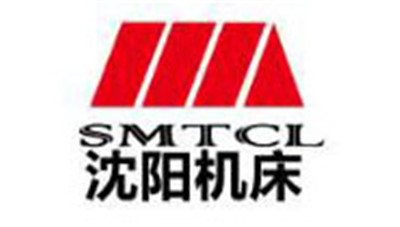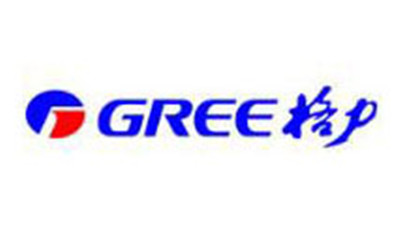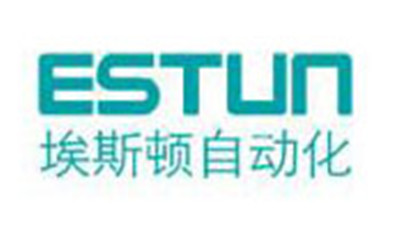The Future of Innovative Applications in Aluminium Coil Technology
Table of Contents
- Emerging Trends in Aluminium Coil Technology: A Data-Driven Overview
- The Role of Automation in Enhancing Aluminium Coil Production Efficiency
- Life Cycle Assessment: Environmental Benefits of Innovative Aluminium Applications
- Market Growth Projections: Aluminium Coil Demand in the Next Decade
- Advanced Coating Techniques: Revolutionizing Aluminium Coil Performance
- Innovative Alloys and Their Impact on Aluminium Coil Applications
- Exploring the Benefits and Applications of High Frequency Inductor Coils in Modern Electronics
- FAQS
- Conclusion
- Related Posts
Lately, the aluminium coil industry has really been stepping up its game, thanks to the growing need for lightweight yet durable materials across a bunch of different fields. If you look at what Grand View Research reports, the global market for aluminium coils is expected to hit around $140 billion by 2025, with an annual growth rate of about 4.2%. This is pretty exciting, especially when you think about how these advancements are opening up new possibilities in electronics, automotive, and construction industries.

Take Dezhou Xinping Electronics Co., Ltd., for example — they’ve been around since 2001 and are known for their high-tech approach to making precision electronic transformers. They've really tapped into the potential of aluminium coil technology to boost product performance and improve energy efficiency. Looking ahead, I think that with new manufacturing techniques and ongoing research into aluminium coil properties, we’re on the verge of some serious market breakthroughs that could lead to more sustainable innovations down the line.
Emerging Trends in Aluminium Coil Technology: A Data-Driven Overview
The world of aluminium coil technology is going through some pretty exciting changes lately, mainly thanks to better data analysis and new ways to apply the tech. You can really see the industry shifting with the latest trends — we're learning a lot about how these materials perform, their environmental footprint, and how to make manufacturing more efficient. Thanks to advanced data techniques like predictive analytics, manufacturers can fine-tune their processes, cut down on waste, and boost the quality of their products. It’s all about going data-driven now, which not only makes operations smoother but also opens up opportunities for customizing aluminium solutions to fit specific industry needs.
And it doesn’t stop there. The rise of smart tech and IoT in the production of aluminium coils is truly changing the game. Real-time monitoring and instant feedback mean manufacturers can tweak their processes on the fly, making sure every coil hits the right specs. These tech advancements are super important, especially for industries like automotive and aerospace that need lightweight yet tough materials. As these trends keep developing, the aluminium coil industry is definitely headed towards a future full of innovation and sustainability — all driven by data and tech making everything smarter and greener.
The Future of Innovative Applications in Aluminium Coil Technology - Emerging Trends in Aluminium Coil Technology: A Data-Driven Overview
| Application Area | 2023 Market Size (in million USD) | Projected Growth Rate (2024-2028) | Key Innovations |
|---|---|---|---|
| Construction | 5000 | 6.5% | Eco-friendly coatings, Lightweight structures |
| Automotive | 3000 | 7.0% | High-strength alloys, Surface finishes |
| Electrical | 2000 | 5.8% | Conductive coatings, Advanced insulation |
| Packaging | 1500 | 4.5% | Recyclability, Barrier properties |
| Aerospace | 1200 | 8.2% | Lightweight alloys, Corrosion resistance |
The Role of Automation in Enhancing Aluminium Coil Production Efficiency
You know, in the ever-changing world of aluminium coil production, automation is really stepping up and making a big difference when it comes to efficiency and precision. The upcoming AICE 2025 SMM Conference is actually highlighting some pretty cool strategies that manufacturers can start using to make their processes smoother. By bringing in the latest automation tech, producers can cut down on mistakes, reduce waste, and keep things flowing better—meaning they get more done, and at lower costs, too.
Plus, there's a growing focus on being eco-friendly in coil processing. More companies are aiming for both speed and accuracy while still staying green. Using automated solutions not only helps them stay competitive but also makes it easier to meet tougher environmental rules. As the industry shifts toward smarter manufacturing, being able to analyze data and use it wisely will be a real game-changer for innovation and long-term growth. It’s all about working smarter and staying ahead of the game.
Life Cycle Assessment: Environmental Benefits of Innovative Aluminium Applications
When we look into how life cycle assessment (LCA) is being used in aluminium coil tech, it really highlights some pretty impressive environmental perks of new aluminium applications. The International Aluminium Institute has reported that, since 1990, the industry has managed to boost its energy efficiency by about 21%. That’s a big deal because it shows how much effort is going into cutting down carbon emissions during production and processing. This kind of progress is so important—aluminium’s often criticized for its high energy use and greenhouse gases, so tracking impacts from raw material extraction all the way to recycling at the end really helps everyone understand the full picture.

Plus, when it comes to new uses of aluminium—think automotive or construction stuff—the potential for cutting down weight is huge. That means vehicles can be more fuel-efficient and their total lifecycle emissions shrink. A report from the European Aluminium Association pointed out that using just one kilogram of aluminium in a car can lead to about 20 kilograms less CO2 over the vehicle’s lifetime. As industries face tighter environmental rules and as customers get more interested in sustainable options, smartly using aluminium isn’t just about lower emissions. It also boosts the circular economy since aluminium can be recycled so efficiently—up to 95% of the energy used to make primary aluminium can be recovered through recycling, making the whole process even greener.
Market Growth Projections: Aluminium Coil Demand in the Next Decade
Looking ahead, the future of aluminium coil technology actually looks pretty bright, with some pretty exciting growth expected over the next ten years. As industries around the world start to lean more towards sustainable materials, aluminium coils are becoming super popular because they help create energy-efficient products. This shift is largely thanks to advances in manufacturing and the fact that aluminium is being used more and more in sectors like automotive, construction, and packaging. Thanks to its versatility, lightweight nature, and corrosion resistance, aluminium is really becoming the go-to choice for all sorts of innovative applications.
If your company is thinking about jumping into aluminium coil technology, it’s a good idea to look into new processing methods. These can help boost quality and cut down on costs. Embracing cutting-edge tech, like automation or smart manufacturing, can really streamline your operations and help you stay ahead of the game as market demands evolve.
As we roll into the next decade, it’s crucial for everyone involved in the aluminium industry to keep an eye on upcoming trends. Focusing on sustainability and exploring fresh, innovative uses that play to aluminium’s unique strengths will definitely pay off. Building partnerships with research groups and industry experts can also be a game changer—they can help develop solutions that not only meet market needs but also support environmental goals.
And here’s a tip: networking with folks in the aluminium scene can give you some serious insights into where things are headed. Attending industry events and forums is a great way to swap ideas and team up on projects that could lead to some really groundbreaking innovations in aluminium coil tech.
Advanced Coating Techniques: Revolutionizing Aluminium Coil Performance
You know, advanced coating tech is really changing the game for aluminum coils. It’s like, paving the way for tougher, more versatile products across a bunch of different uses. I came across this report from MarketsandMarkets that says the global market for these coatings is expected to grow at about 5.6% per year until 2027. That’s pretty significant! What’s behind this big push? Well, it’s mainly the new coatings that do more than just protect — they also look better and are more eco-friendly.
These high-tech coatings, especially those using nanotech, allow manufacturers to make super-thin layers that still pack a punch when it comes to protection. Take fluoropolymer coatings, for example — they’re great at resisting weather damage and keep gloss and color looking fresh, often performing 30% to 50% better than older types. Plus, eco-friendly powder coatings are getting more popular too — they help cut down on nasty VOC emissions, which is a big win for the environment. Overall, these innovations are not just helping aluminum last longer; they're also pushing the industry towards higher standards of performance and being kinder to the planet.
Innovative Alloys and Their Impact on Aluminium Coil Applications
You know, innovative alloys are really changing the game when it comes to aluminum coil applications. They’re bringing better performance, sustainability, and versatility to the table. I came across a recent report by Research and Markets that says the global aluminum alloy market is expected to grow about 5.1% each year from 2021 to 2026—that’s pretty fast! The main driver behind this surge? Well, it’s mainly the rising demand for lightweight materials in industries like automotive and aerospace. These alloys are a real game-changer because they cut down weight significantly and help improve fuel efficiency—huge benefits for companies looking to stay eco-friendly.
Plus, with all the latest advancements in aluminum coil tech, we’re now seeing high-strength alloys that still stay ductile and resist corrosion. Take the 7xxx series alloys, for example—they’re pretty popular now, especially in things like aircraft structural parts where strength really matters. The Aluminum Association points out that these innovations are also making manufacturing more efficient and cutting energy use. It’s pretty exciting because, as this technology keeps progressing, these innovative alloys are going to play a big role in meeting the needs of modern industries and applications.
Exploring the Benefits and Applications of High Frequency Inductor Coils in Modern Electronics
High-frequency inductor coils, often characterized as spiral coils, play a pivotal role in modern electronics, offering unique benefits and versatile applications. These coils consist of wires meticulously wound around an insulating tube, which can be either hollow or contain a core made of iron or magnetic powder. This design not only enhances their inductance characteristics but also ensures that the wires are insulated from one another, thereby minimizing inter-winding capacitance and achieving high efficiency at elevated frequencies.
The applications of high-frequency inductors span various industries, demonstrating their essential role in contemporary technology. Common inductive components include fixed inductors, choke coils, wire frame oscillating coils, and deflection coils, all of which find utility in power communications, new energy vehicles, and electric vehicle controllers. Moreover, their use extends into medical equipment and LED lighting, showcasing their adaptability to various technological demands. Our ability to design custom solutions tailored to specific customer requirements, paired with comprehensive OEM services, ensures that we can meet the diverse needs of today’s high-tech landscape.
FAQS
: Automation enhances efficiency and precision in aluminium coil production by minimizing errors, reducing wastage, and optimizing workflow, leading to higher productivity and lower operational costs.
Companies are focusing on precision and speed while adopting eco-friendly practices in production, which is facilitated by the deployment of automated solutions that comply with stricter environmental regulations.
The global aluminium alloy market is projected to grow at a CAGR of 5.1% from 2021 to 2026, driven by increased demand for lightweight materials in sectors like automotive and aerospace.
Innovative aluminium alloys reduce weight and improve fuel efficiency, making them essential for manufacturers who prioritize sustainability in their production processes.
Advancements have led to the development of high-strength alloys, such as the 7xxx series, which are critical for applications demanding high strength, particularly in structural components of aircraft.
New aluminium coil technologies enable the production of innovative alloys that lead to more efficient production processes and lower energy consumption, supporting greener manufacturing practices.
The AICE 2025 SMM Conference highlights innovative strategies for manufacturers to adopt, aimed at streamlining processes through advanced automation technologies in aluminium coil production.
Effective data analysis and leverage are key for driving innovation and ensuring long-term growth as the industry transitions to smarter manufacturing practices.
Conclusion
Hey, so I recently read this blog titled "The Future of Innovative Applications in Aluminium Coil Technology," and I gotta say, it really dives into how fast things are changing in the aluminium coil world. They talk a lot about the new trends popping up, especially those driven by data analytics—pretty cool stuff! Automation gets a lot of airtime too, and for good reason. It’s becoming a game changer when it comes to ramping up production, helping manufacturers keep up with the growing demand while also making better use of resources. They also go into this detailed life cycle assessment, which actually highlights how these new aluminium applications are not just innovative but also greener—totally in line with sustainability goals these days.
Looking ahead, the market projections are pretty optimistic. Demand for aluminium coils is expected to skyrocket over the next decade, thanks to things like fancy new coating techniques and innovative alloys that boost performance and open up new application possibilities. For a company like Dezhou Xinping Electronics Co., Ltd.—who are pros in precision electronic transformers—these trends offer a golden opportunity. They can totally leverage these advanced aluminium coil techs to keep their products cutting-edge and stay ahead of the competition in such a high-tech arena.
Related Posts
-

30 Reasons Why the Best 30 Kva Transformer is Essential for Your Global Procurement Strategy
-

Understanding Problems Associated with Earthing Transformers in Power Systems
-

Unlocking the Advantages of Axial Leaded Power Ferrite Bead Inductors for Modern Electronics
-

Essential Checklist for Selecting Large Rated Current Common Mode Inductors in Your Projects
-

How to Choose the Right Constant Voltage Transformer for Your Industrial Application
-

Understanding the Challenges Faced with Converter Transformers in Industrial Applications
Blog Tags:


















